|

by Annamaria Talas
Issue 80 - Spring 2018
November 07, 2018
from
CosmosMagazine Website
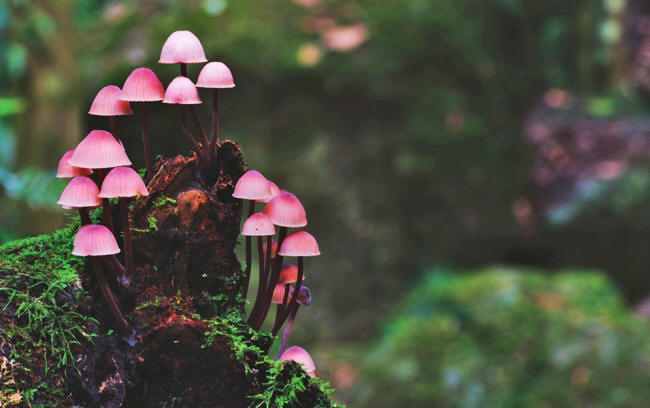
credit: Steve Axford
The
button mushroom
in your local
grocery store
is a visible
outpost of a largely
hidden,
alien-like kingdom
that rules all
life on land:
fungi...
They range in size from microscopic yeast to the largest organism
alive - the honey fungus
Armillaria solidipes whose
underground network spans 1662 football fields...!
After bacteria, they are
the most ancient land-based life.
According to the latest
estimate from mycologist Mary Berbee of the University of
British Columbia, they've been here for about a billion years,
predating the first land plants by at least 500 million years.
They eked out a living mining rocks, extracting minerals, dining on
bacteria and fighting them for scarce resources. They became masters
of survival.
And then around 450 million years ago, a group of green algae
splashed up on to the shoreline.
Fungi extended a helping hand,
sending their filaments into the plant's tissue to provide them with
a lifeline for water and minerals. The algae repaid the favor by
providing sugar.
The relationship was remarkably intimate:
the fungal filaments
penetrated the very cells of the plant, forming a tree-like
structure that's known as 'arbuscular
mycorrhiza'.
Just how this
interspecies collaboration was established has been an enduring
secret of nature.
The mystery was solved in 2015 when evolutionary microbiologist
Pierre-Marc Delaux, now at Université Paul Sabatier,
Toulouse,
revealed that the algal ancestors
of land plants, a group called 'charophytes',
were equipped to communicate with fungi well before they encountered
them.
Unlike other algae, these charophytes possessed a unique set of
'signaling' genes.
This enabled them to
detect and work with these co-operative fungi. Ever since, nearly
every land plant has been nurtured by its symbiotic fungi.
The greening of land set in motion a trajectory that led to the
richness of life around us. Working with fungi, the first plants
changed the atmosphere and sparked the evolution of terrestrial
ecosystems with all their plants and animals.
So next time you happen to glance at a button mushroom in the
grocery store, pause and reflect:
you are gazing at one
of the conductors of the symphony of life on land.
If it weren't for fungi,
we wouldn't be here...
Immortal spores
Day after day, billions of invisible fungal spores rain down upon
us.
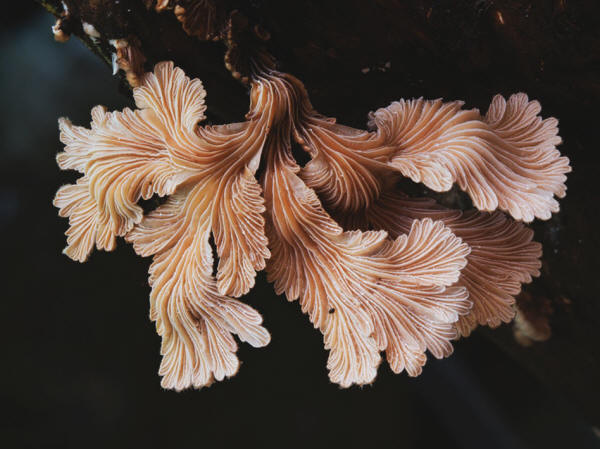
Steve Axford
Each holds the DNA
blueprint for a fungus, and it can faithfully preserve that DNA for
astonishing periods of time.
Last year researchers from the Japan Agency for Marine-Earth
Science and Technology grew a one-centimeter tall mushroom from
spores recovered from a drill core, a long thin section of seabed
material.
Boring 2.5 km under the
Pacific seabed, the bottom of the core contained 20-million-year-old
sediments that carried the spores of an ancient land-based
fungus.
It appears most
closely related to a species called
Schizophyllum commune.
Medicinal
fungus
Fungi have a titillating sex-life with up to
28,000 sexual identities to choose
from, as well as sex-free procreation.
That makes things tricky
for mycologists, as Kathie Hodge from Cornell University
found in 1994.
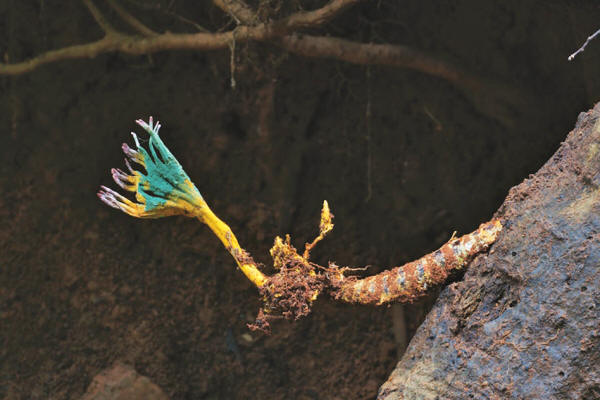
Steve Axford
When she and her students went mushroom hunting in the woods of
Ithaca in New York, they found a mysterious fungus sprouting from
the corpse of a beetle grub.
It was identified as C.
subsessilis, a member of an insect-eating group of fungi known as
Cordyceps.
The surprise came when
Hodge germinated the spores. They appeared to develop into a totally
different species, the mould
Tolypocladium. In fact, what Hodge
discovered is that mouldy Tolypocladium is the asexual form of
insect devouring C. subsessilis.
Tolypocladium is famous as the source of the immunosuppressant drug
cyclosporine. Discovered 47 years
ago, the drug single-handedly made organ transplants possible.
Thanks to Hodge's woodland discovery, scientists are now
fossicking in dead insects for the
next generation of immunosuppressant drugs.
The third mode of
life
Mushrooms may be conspicuous but they are the tip of the iceberg.
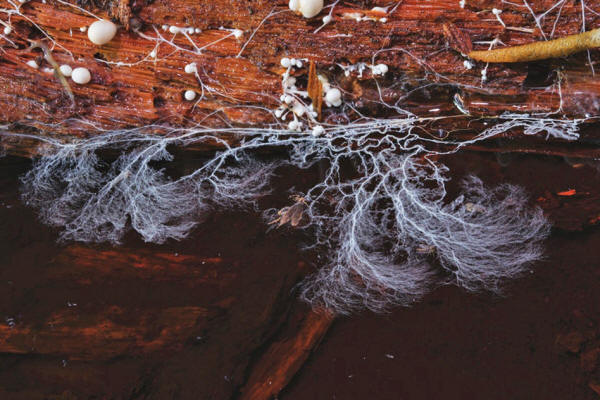
Steve Axford
The body of the fungus is
a vast filamentous network of
hyphae hidden below ground or
inside the body of the plant or animal it is feasting on. Biologists
traditionally divide life into single-cell or multicellular
organisms.
Mark Fricker, a
biologist at Oxford University, says this network represents,
"a third mode of
life".
Like a brain, these
networks are adaptive.
They respond to the
environment, allowing fungi to deploy nutrients where they are most
needed, explore resources, combat enemies or make urgent repairs.
They are nature's most
efficient and resilient network.
Fricker is
developing models to learn how
these adaptive properties emerge and might be applied to solve the
problems of man-made networks such as rail lines.
Radiation
eaters?
These bioluminescent mushrooms may look otherworldly, but the most
alien feature of fungi is that they can harvest radiation to
grow.
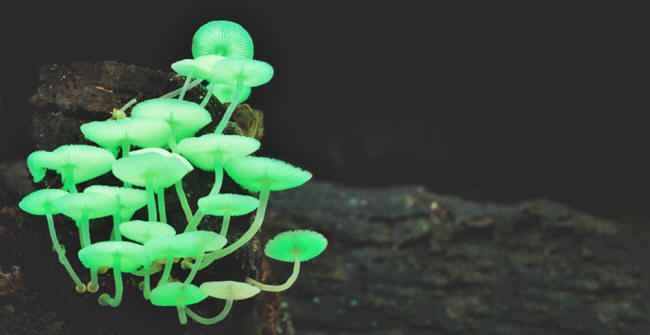
Steve Axford
Scientists first got a
hint of this after the
Chernobyl nuclear plant meltdown in
1986.
In the clean up operation, they noticed dark-colored fungi
growing in the contaminated soils
nearby. Their dark color was due to
melanin - the same pigment that
colors human skin.
Researchers thought
melanin might be protecting the fungi against gamma radiation much
as it protects us from UV rays.
But according to a 2007 study (Ionizing
Radiation Changes the Electronic Properties of Melanin and Enhances
the Growth of Melanized Fungi) by Ekaterina Dadachova
and Arturo Casadevall, then at Albert Einstein College of
Medicine, fungi use melanin to harvest the energy of gamma
rays...
In the lab, gamma rays
spurred the growth of a species called
Cryptococcus neoformans.
But only if its
melanin-producing gene was intact.
| 





